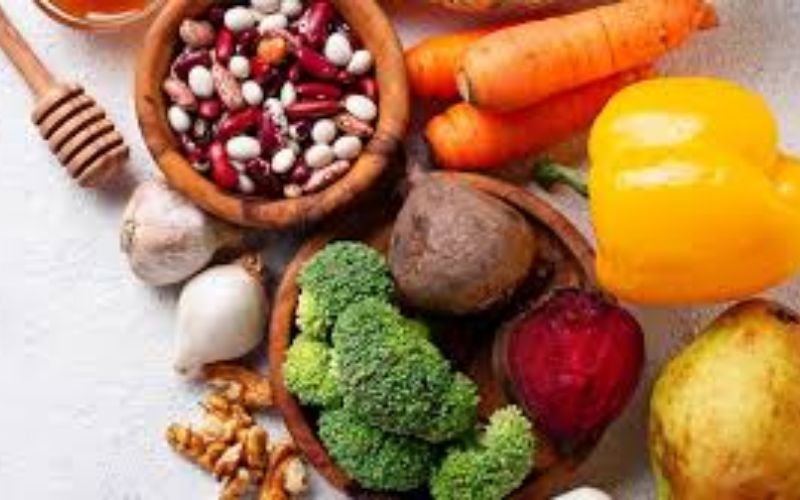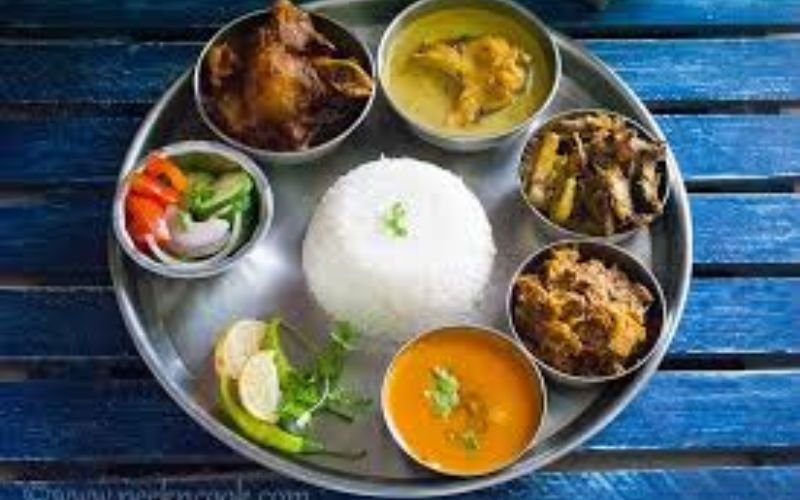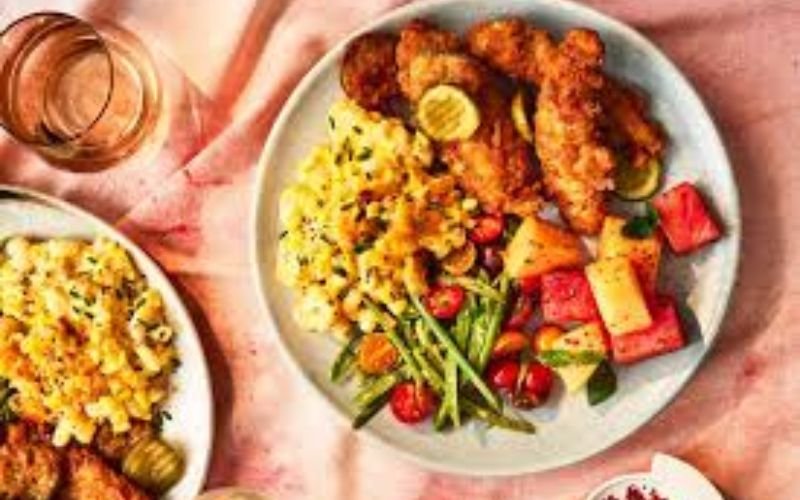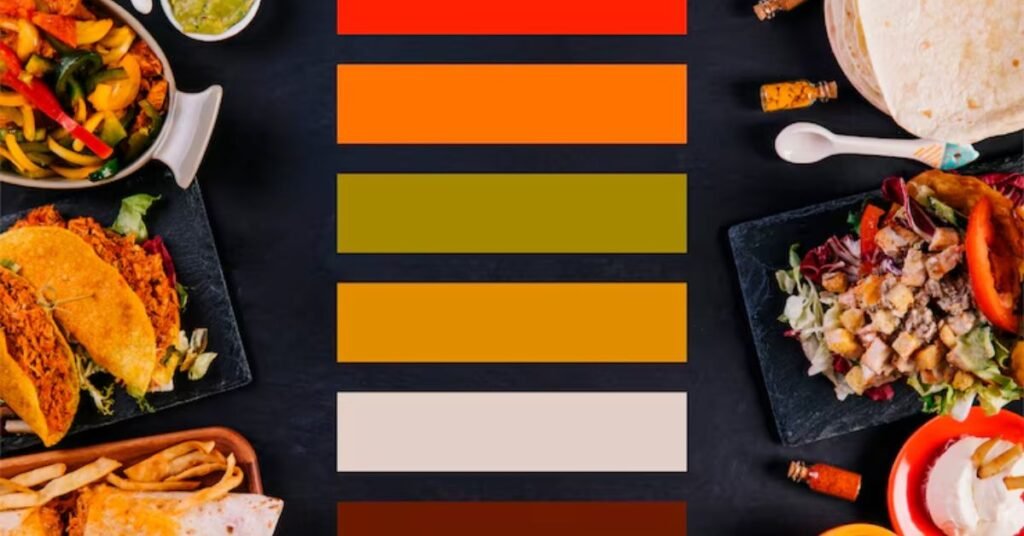Food is not just about taste it is also about visual appeal, texture, and nutrition. A colorful plate looks inviting, improves appetite, and makes meals more enjoyable. This artistic arrangement of food is called a food palette.
Just like an artist paints with colors, chefs and home cooks create delicious artwork with food. A well-balanced food palette ensures that your meal is both nutritious and beautiful.
What is a Food Palette?

A food palette is the thoughtful combination of colors, textures, and flavors on a plate. It ensures:
- A beautiful presentation
- Balanced nutrition
- Variety in taste
- A memorable dining experience
The Importance of a Food Palette
- Attractive Presentation – A colorful plate excites the eyes before the taste buds.
- Balanced Nutrition – Different colors = different nutrients.
- Boosts Appetite – Bright colors and textures encourage better eating.
- Encourages Healthy Eating – Adding multiple colors means adding multiple vitamins.
- Adds Creativity – Every plate becomes a piece of art.
The Colors of a Food Palette and Their Benefits
- Red Foods – (Tomatoes, strawberries, cherries) → Heart health & skin glow.
- Orange Foods – (Carrots, oranges, pumpkin) → Strong immunity & better vision.
- Yellow Foods – (Bananas, corn, pineapple) → Energy & digestion.
- Green Foods – (Spinach, broccoli, kiwi) → Detox & stronger bones.
- Purple/Blue Foods – (Blueberries, eggplant, grapes) → Brain health & memory.
- White/Brown Foods – (Rice, potatoes, mushrooms) → Energy & gut support.
Tips for Creating a Beautiful Food Palette
- Add at least 3–4 colors to every meal.
- Mix textures: soft + crunchy, creamy + crispy.
- Use herbs and garnishes for a finishing touch.
- Prefer seasonal and fresh produce for better taste and nutrition.
- Avoid overcrowding leave space on the plate for elegance.
Food Palette Ideas for Every Meal
Breakfast Food Palette

- Banana oatmeal topped with strawberries and kiwi
- Spinach and tomato omelet with a slice of whole wheat bread
- Yogurt bowl with mango, blueberries, and granola
Tip: Use at least one fruit + one protein + one grain for a complete colorful breakfast.
Lunch Food Palette

- Grilled chicken with steamed broccoli, roasted carrots, and mashed potatoes
- Vegetable rice bowl with corn, peas, and bell peppers
- Lentil soup served with fresh salad (tomato, cucumber, avocado)
Tip: Combine a protein source, colorful vegetables, and healthy carbs for balance.
Dinner Food Palette

- Baked salmon with spinach, cherry tomatoes, and sweet potato mash
- Vegetable curry with turmeric rice and green chutney
- Pasta with tomato sauce, topped with basil and cheese, served with a side salad
Tip: Keep dinner lighter, but add colors with vegetables and herbs.
Snack Food Palette

- Fruit platter with apple, pineapple, and grapes
- Smoothie made with banana, spinach, and blueberries
- Hummus with carrot and cucumber sticks
Tip: Snacks should be colorful, light, and easy to grab.
Quick Table: Food Palette Colors and Benefits
| Food Color | Examples | Key Benefits |
|---|---|---|
| Red | Tomato, Strawberry | Heart health, skin glow |
| Orange | Carrot, Orange, Pumpkin | Immunity, eye health |
| Yellow | Banana, Corn, Pineapple | Energy, digestion |
| Green | Spinach, Kiwi, Broccoli | Detox, strong bones |
| Purple | Blueberry, Eggplant | Brain health, memory support |
| White | Rice, Potato, Mushroom | Gut health, energy |
Conclusion
A food palette is the secret to healthy, beautiful, and delicious meals. By using a mix of colors, textures, and flavors, you can transform simple food into an exciting experience.
Whether it’s a bright breakfast smoothie bowl, a colorful lunch plate, or a balanced dinner, every meal can become your personal canvas. Remember: a colorful plate is a healthy plate.
So, start creating your own food palette today and enjoy food that’s not only tasty but also a visual delight.
FAQs
Q1: What is a food palette in cooking?
A food palette refers to the mix of colors, textures, and flavors on a plate that make meals appealing and balanced.
Q2: Why should I add colors to my food palette?
Each food color represents different nutrients, so a colorful plate ensures a healthier diet.
Q3: How can I create a healthy food palette at home?
Add colorful vegetables, fresh fruits, proteins, and grains to every meal.
Q4: What are some easy food palette ideas?
Smoothie bowls for breakfast, rice bowls for lunch, baked salmon dinners, and fruit platters for snacks.
Q5: Does food palette affect taste?
Yes, combining different colors and textures improves both taste and presentation.
Q6: Can food palette improve eating habits?
Absolutely! Attractive and colorful meals encourage better appetite and healthy eating.

